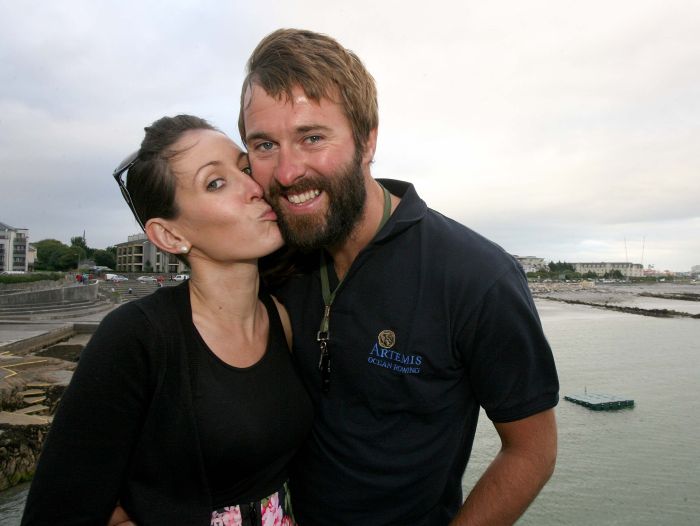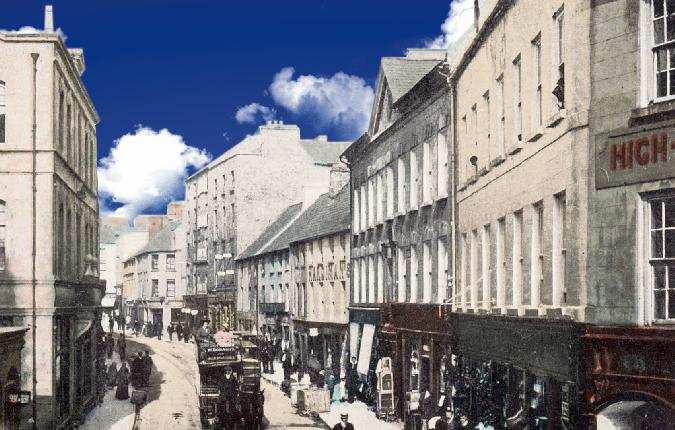Archive News
Record-breaker Galwayman conquers the Atlantic

Date Published: 05-Aug-2010
by Dearbhla Geraghty
From the lows of falling overboard in the mid-Atlantic to the highs of finally seeing land after nearly 44 days at sea, Galway’s own world record breaker is already looking ahead to his next challenge.
On Saturday, Ray Carroll (33) from Renmore and the three other crew members on board the 23’ Artemis Investments smashed the North Atlantic rowing record set more than 100 years ago by two Norwegian emigrants.
In June 1896 George Harbo and Gabriel Samuelson set off from Battery Park, New York, in an open 18’ skiff, and it took them 55 days and seven hours to row unaided to the Scilly Isles on the most south eastern point of England – over 3,000 miles away.
More than 60 attempts to break that record followed, but it was not until 114 years later that the aim was finally realised – with 11 days to spare.
While most of us would baulk at the thought of it, the Irish Ferries ship manager is no stranger to this type of challenge.
Two years ago he was looking for some way to raise money for Aware (the charity that supports those with depression) and to mark the memory of his brother, Aidan, who died in 1997, when he heard a radio interview with one of his future crew mates. The search was on for people to join a rowing team of 12 that would attempt a world record trip across the mid-Atlantic from the Canary Islands to Barbados.
After this successful venture – which realised €90,000 in funding – he turned his attention to Jigsaw, the support service for young people on Mary Street, and with it one of the greatest challenges available. “The biggest prize in rowing is the North Atlantic, from New York to Britain,” Ray told the Galway City Tribune yesterday.
By attempting this challenge, the crew had to break the record completely unsupported. This meant that from cast off they could receive no help from any other vessel or person whatsoever until they reached land.
They rowed nonstop in pairs on two hour shifts, taking cat naps and eating in between. Everything had to be carried on their boat which had very confined sleeping and storage facilities.
“The cabin was the size of the back of a car, with two living there at the same time, and it being full with gear and food, you were really on top of each other – it can take 30 minutes to change your socks – it was very uncomfortable and disorientating,” Ray says.
The lowest point for the Galway man came a month into the challenge when, during a very bad storm, he was washed overboard – the boat also capsized twice along the way.
Fortunately he was tied on to the boat, and eventually the other crew managed to pull him on board, but he was left shaken by the experience.
“I was very disorientated and swallowed a lot of water, but instinct takes over and you’re in survival mode,” he recalled.
For the full story, see the Galway City Tribune.
Galway in Days Gone By
The way we were – Protecting archives of our past

People’s living conditions less than 100 years ago were frightening. We have come a long way. We talk about water charges today, but back then the local District Councils were erecting pumps for local communities and the lovely town of Mountbellew, according to Council minutes, had open sewers,” says Galway County Council archivist Patria McWalter.
Patria believes we “need to take pride in our history, and we should take the same pride in our historical records as we do in our built heritage”. When you see the wealth of material in her care, this belief makes sense.
She is in charge of caring for the rich collection of administrative records owned by Galway County Council and says “these records are as much part of our history as the Rock of Cashel is. They document our lives and our ancestors’ lives. And nobody can plan for the future unless you learn from the past, what worked and what didn’t”.
Archivists and librarians are often unfairly regarded as being dry, academic types, but that’s certainly not true of Patria. Her enthusiasm is infectious as she turns the pages of several minute books from Galway’s Rural District Councils, all of them at least 100 years old.
Part of her role involved cataloguing all the records of the Councils – Ballinasloe, Clifden, Galway, Gort, Loughrea, Mountbellew, Portumna and Tuam. These records mostly consisted of minutes of various meetings.
When she was cataloguing them she realised their worth to local historians and researchers, so she decided to compile a guide to their content. The result is For the Record: The Archives of Galway’s Rural District Councils, which will be a valuable asset to anybody with an interest in history.
Many representatives on these Councils were local personalities and several were arrested during the political upheaval of the era, she explains.
And, ushering in a new era in history, women were allowed to sit on these Rural District Councils – at the time they were not allowed to sit on County Councils.
All of this information is included in Patria’s introductory essay to the attractively produced A4 size guide, which gives a glimpse into how these Rural Councils operated and the way political thinking changed in Ireland during a short 26-year period. In the early 1900s, these Councils supported Home Rule, but by 1920, they were calling for full independence and refusing to recognise the British administration.
“I love the tone,” says Patria of the minutes from meetings. “The language was very emotive.”
That was certainly true of the Gort Rural District Council. At a meeting in 1907, following riots in Dublin at the premiere of JM Synge’s play, The Playboy of the Western World the councillors’ response was vehement. They recorded their decision to “protest most emphatically against the libellous comedy, The Playboy of the Western World, that was belched forth during the past week in the Abbey Theatre, Dublin, under the fostering care of Lady Gregory and Mr Yeats. We congratulate the good people of Dublin in howling down the gross buffoonery and immoral suggestions that are scattered throughout this scandalous performance.
For more from the archives see this week’s Tribunes here
Archive News
Galway have lot to ponder in poor show

Date Published: 23-Jan-2013
SLIGO 0-9
GALWAY 1-4
FRANK FARRAGHER IN ENNISCRONE
GALWAY’S first serious examination of the 2013 season rather disturbingly ended with a rating well below the 40% pass mark at the idyllic, if rather Siberian, seaside setting of Enniscrone on Sunday last.
The defeat cost Galway a place in the FBD League Final against Leitrim and also put a fair dent on their confidence shield for the bigger tests that lie ahead in February.
There was no fluke element in this success by an understrength Sligo side and by the time Leitrim referee, Frank Flynn, sounded the final whistle, there wasn’t a perished soul in the crowd of about 500 who could question the justice of the outcome.
It is only pre-season and last Sunday’s blast of dry polar winds did remind everyone that this is far from summer football, but make no mistake about it, the match did lay down some very worrying markers for Galway following a couple of victories over below par third level college teams.
Galway did start the game quite positively, leading by four points at the end of a first quarter when they missed as much more, but when Sligo stepped up the tempo of the game in the 10 minutes before half-time, the maroon resistance crumbled with frightening rapidity.
Some of the statistics of the match make for grim perusal. Over the course of the hour, Galway only scored two points from play and they went through a 52 minute period of the match, without raising a white flag – admittedly a late rally did bring them close to a draw but that would have been very rough justice on Sligo.
Sligo were backable at 9/4 coming into this match, the odds being stretched with the ‘missing list’ on Kevin Walsh’s team sheet – Adrian Marren, Stephen Coen, Tony Taylor, Ross Donovan, David Kelly, David Maye, Johnny Davey and Eamon O’Hara, were all marked absent for a variety of reasons.
Walsh has his Sligo side well schooled in the high intensity, close quarters type of football, and the harder Galway tried to go through the short game channels, the more the home side bottled them up.
Galway badly needed to find some variety in their attacking strategy and maybe there is a lot to be said for the traditional Meath style of giving long, quick ball to a full forward line with a big target man on the edge of the square – given Paul Conroy’s prowess close to goal last season, maybe it is time to ‘settle’ on a few basics.
Defensively, Galway were reasonably solid with Gary Sice at centre back probably their best player – he was one of the few men in maroon to deliver decent long ball deep into the attacking zone – while Finian Hanley, Conor Costello and Gary O’Donnell also kept things tight.
For more, read this week’s Connacht Tribune.
Archive News
Real Galway flavour to intermediate club hurling battle in Birr

Date Published: 23-Jan-2013
images/files/images/x3_Courthouse.jpg









